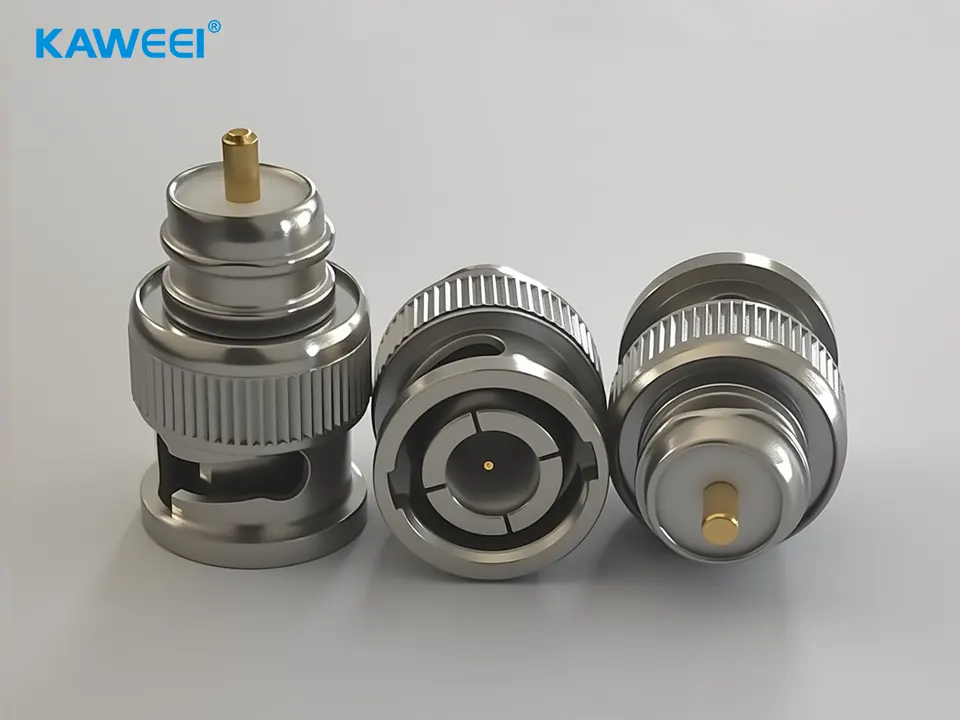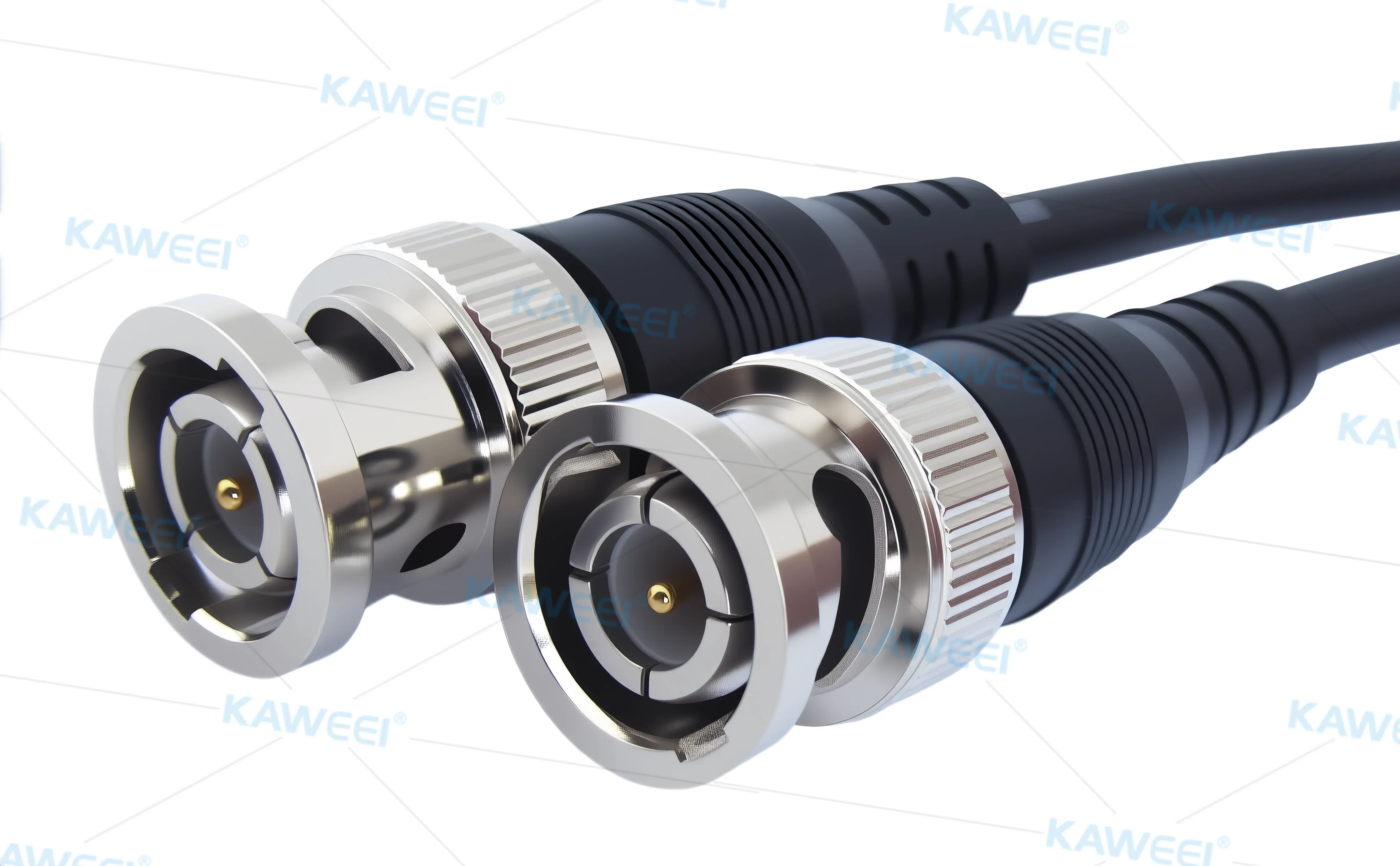BNC connector
The BNC connector is a miniature radio frequency (RF) connector originally developed for low-frequency applications.

This quick-connect/disconnect circular connector employs a dual-stud bayonet locking mechanism, allowing users to rotate and engage it securely. A tactile click indicates a firm connection; reverse rotation disengages the connector.
The BNC connector is named after its inventors: Paul Neill of Bell Labs and Carl Concelman of Amphenol, with the acronym derived from their surnames. However, the designation has some variations: “B” is commonly interpreted as Bayonet (Bayonet Neill–Concelman), while some sources suggest it stands for “Baby” (Baby Neill–Concelman), referencing the connector’s compact size suitable for smaller-diameter coaxial cables. Other variants include Baby N Connector, Baby Neill Constant, and British Naval Connector.

Neill also developed the N-type connector, and Concelman developed the C-type connector. By combining elements of these designs, they created the TNC connector — a threaded Neill–Concelman variant. The TNC connector provides superior performance to the BNC connector at microwave frequencies.
Main Structural Components
- Center Pin: The plug houses a metal pin, while the jack features a corresponding receptacle.
- Dielectric Insulator: Located between the center pin and outer shell, it maintains the coaxial spacing and ensures consistent impedance (commonly 50Ω or 75Ω).
- Outer Conductor: Cylindrical metallic housing connected to the coaxial cable’s shielding layer.
- Bayonet Lock: The outer layer features a coupling nut with two protruding lugs; the jack has matching slots for secure engagement.
- Cable Termination: Mechanism to secure the coaxial cable to the BNC plug.
- Plug & Jack: The plug has a center pin and a rotatable coupling nut; the jack has a receptacle and slots for the plug to engage.

BNC Connector Types
- Solder Type: Requires soldering, commonly used in laboratories and low-volume production.
- Crimp Type: Requires a crimping tool, ideal for engineering installations and high-volume custom assemblies.
- Screw Type: Secured via screws without soldering or crimping; convenient but slightly less robust.
- Twist-On Type: Directly twists onto the cable; quick and simple but offers lower performance.
Kaweei BNC Connector Harness Customization FAQ
What types of BNC connectors can be customized?
Male (plug) and female (jack), including solder, crimp, screw, and twist-on types.
What lengths of BNC harnesses can be customized?
From a few centimeters to tens of meters, fully tailored to project requirements.
What applications are supported?
CCTV surveillance, broadcast television, RF communications, test & measurement instruments, and other professional applications.
Lead time and order quantity?
Small-batch samples are available; bulk production depends on quantity and cable length. Standard lead time is 14–21 business days.
What quality assurances are provided?
100% tested for continuity and impedance matching, using high-quality connectors and shielding for durability and reliable performance.




